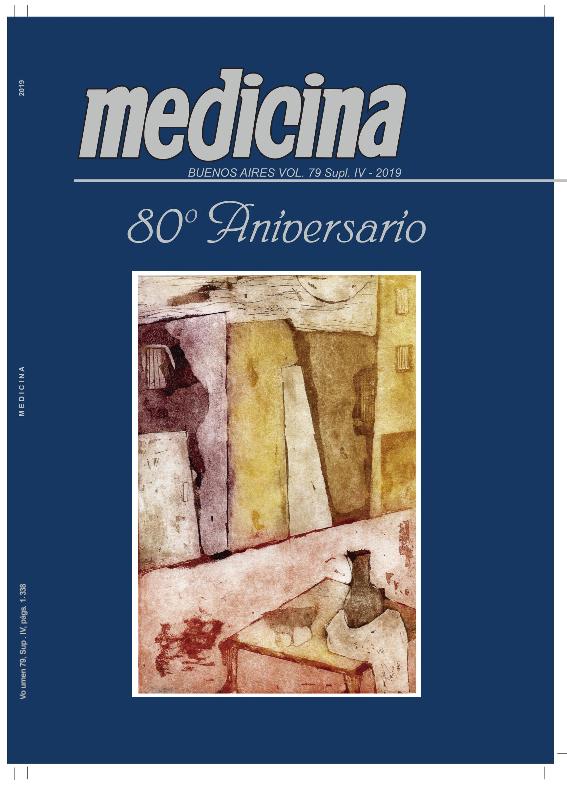Evento
Antitumor role of histamine h4 receptor in human t-cell lymphoma: therapeutic benefit for combination therapy with histamine and histone deacetylase inhibitors
Clauzure, Mariangeles ; Táquez Delgado, Mónica Alejandra
; Táquez Delgado, Mónica Alejandra ; Cerchietti, Leandro
; Cerchietti, Leandro ; Medina, Vanina Araceli
; Medina, Vanina Araceli
 ; Táquez Delgado, Mónica Alejandra
; Táquez Delgado, Mónica Alejandra ; Cerchietti, Leandro
; Cerchietti, Leandro ; Medina, Vanina Araceli
; Medina, Vanina Araceli
Tipo del evento:
Reunión
Nombre del evento:
LXIV Reunión Anual de la Sociedad Argentina de Investigación Clínica; LI Reunión Anual de la Asociación Argentina de Farmacología Experimenta; XXI Reunión Anual de la Sociedad Argentina de Biología; XXXI Reunión Anual de la Sociedad Argentina de Protozoología; IX Reunión Anual de la Asociación Argentina de Nanomedicinas y VI Reunión Científica Regional de la Asociación Argentina de Ciencia y Tecnología de Animales de Laboratorio
Fecha del evento:
13/11/2019
Institución Organizadora:
Sociedad Argentina de Investigación Clínica;
Asociación Argentina de Farmacología Experimental;
Sociedad Argentina de Biología;
Sociedad Argentina de Protozoología;
Asociación Argentina de Ciencia y Tecnología de Animales de Laboratorio;
Asociación Argentina de Nanomedicinas;
The Histochemical Society;
Título de la revista:
Medicina (Buenos Aires)
Editorial:
Fundación Revista Medicina
ISSN:
0025-7680
e-ISSN:
1669-9106
Idioma:
Inglés
Clasificación temática:
Resumen
The discovery of the human histamine H4 receptor (H4R) has contributed to our understanding of histamine role in numerous physiological and pathological conditions, including tumor development and progression. High histamine levels have been determined in lymph nodes of patients with malignant lymphomas, but as far as we know there is no evidence of the expression and function of the H4R in this tumor type. The aims of this work were to study the expression of the H4R and to evaluate the therapeutic efficacy of histamine and H4R?s ligands as a single treatment or in combination with inhibitors of the histone deacetylase (HDACi) for the treatment of T-cell lymphoma (TCL). Results demonstrate the expression of H4R isoforms at the mRNA and protein levels in 3 human aggressive TCL cell lines (OCI-Ly12 and Karpas 299, Peripheral TCL; HuT78 Sezary Syndrome). HEK293T was used as a negative control. Histamine and specific H4R agonists (VUF8430 and JNJ28610244) significantly reduced cell viability (CellTiter-Blue Assay) in a dose-dependent manner and induced cell apoptosis (Caspase-Glo 3/7 Assay) in the three cell lines (p<0.05, n=3 independent experiments performed in triplicates). The combined treatment with the H4R antagonist (JNJ7777120, 10 µM) reversed the effects of the H4R ligands (10 µM) on TCL. Importantly, we screened active compounds against TCL, evaluating a dug repurposing library of 384 FDA-approved compounds (1 μM) in combination with histamine (10 μM) in Hut78 cells. Histamine produced a synergistic antitumor effect, evaluated with a metabolic assay, with 18 of these compounds, including the HDACi panobinostat. Apoptosis, proliferation and oxidative stress studies confirmed the antitumoral effects of the combination. We conclude that H4R is expressed in TCL and it is involved in histamine-mediated responses. Histamine could be an attractive compound to be used as a single therapy or in combination with HDACi for the treatment of TCL.
Palabras clave:
HISTAMINE
,
LYMPHOMA
,
T CELL
Archivos asociados
Licencia
Identificadores
Colecciones
Eventos(CCT - PATAGONIA CONFLUENCIA)
Eventos de CTRO.CIENTIFICO TECNOL.CONICET - PATAGONIA CONFLUENCIA
Eventos de CTRO.CIENTIFICO TECNOL.CONICET - PATAGONIA CONFLUENCIA
Citación
Antitumor role of histamine h4 receptor in human t-cell lymphoma: therapeutic benefit for combination therapy with histamine and histone deacetylase inhibitors; LXIV Reunión Anual de la Sociedad Argentina de Investigación Clínica; LI Reunión Anual de la Asociación Argentina de Farmacología Experimenta; XXI Reunión Anual de la Sociedad Argentina de Biología; XXXI Reunión Anual de la Sociedad Argentina de Protozoología; IX Reunión Anual de la Asociación Argentina de Nanomedicinas y VI Reunión Científica Regional de la Asociación Argentina de Ciencia y Tecnología de Animales de Laboratorio; Mar del Plata; Argentina; 2019; 188-188
Compartir



